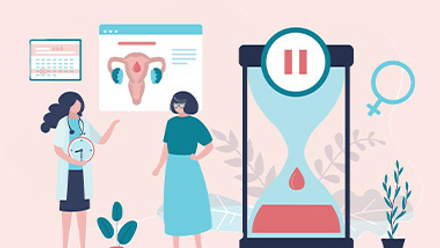5 tips on how to support menopausal women in the workplace
Despite the fact that menopause affects nearly 50% of the population, there are minimal policies and resources in workplaces to support menopausal people.
And while this type of support is not only crucial for employee wellbeing, it’s also been proven to be beneficial for attracting and retaining top talent. Research has found that 25% of women have considered leaving their job, with one in 10 actually quitting, due to menopause symptoms.
So what are some top tips for employers looking to create a more menopause-friendly workplace environment?
1. Start conversations
Talking about menopause openly in the workplace reduces stigma and helps individuals feel more comfortable asking for support. It also helps others who aren’t experiencing menopause to build empathy towards what their colleagues are going through and why they might be struggling.
There are many ways to spark discussion around menopause in the office. For example, starting a Slack channel, hosting regular chats over coffee, or formal affinity groups.
2. Provide the right training
Just as it’s helpful for those working with individuals in menopause to be educated and equipped with the skills to better understand what their peers are going through, it’s even more important for the leadership team.
Leaders in your company should be well educated about the types of symptoms and accommodations people might require within menopause and they must know how to handle uncomfortable situations as they arise.
3. Allowing flexibility at work
More and more companies every year are adopting flexible workplaces. In fact, a 2022 survey by Remote found that 74.2% of the 10,000 full-time employees questioned prioritise flexible work hours when thinking about moving jobs.
Providing this as an option to your employees is not only useful in retention, but it’s also helpful for supporting current employees facing more invisible setbacks such as menopause.
Even if you don’t have a direct menopause policy in your workplace, allowing more workplace flexibility in the form of robust sick leave and flexible scheduling can be enough to support those that need it, while supporting other groups experiencing different kinds of setbacks. It’s a win-win.
4. Offer free supplies
Being adaptable as an employer is key in creating an environment that’s actually taking action to support those going through menopause.
That’s why, when employees are in the office, having access to supplies on-hand as symptoms come and go is a great way to start. This could include providing period products, or extra uniforms and electric fans for those experiencing regular hot flashes.
5. Catering to the unique individual
It’s always a good idea to see how you can best optimise the workspace for each individual's needs.
Some individuals experiencing hot flashes may not want to work at a desk that gets too much sun, or one that’s next to a heater. Maybe they’d prefer a seat next to the toilets, or a quiet area. Be sure to treat each individual as an individual – and don’t group all women or menopausal individuals into a specific category.
Supplied by REBA Associate Member, YuLife
YuLife is the first digital life insurance provider on a mission to inspire life.








